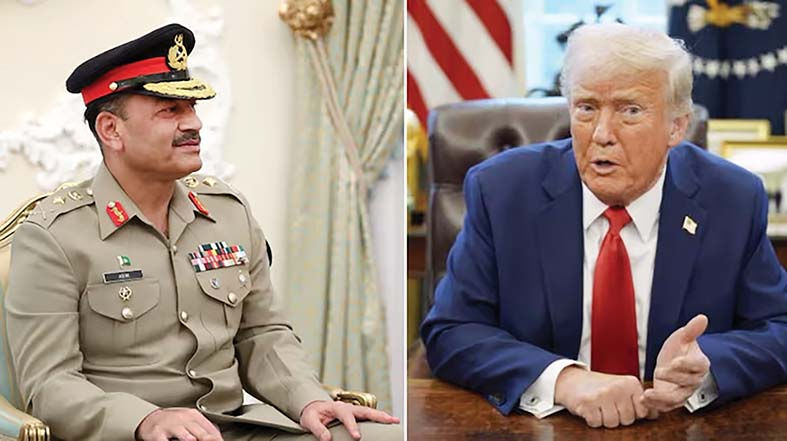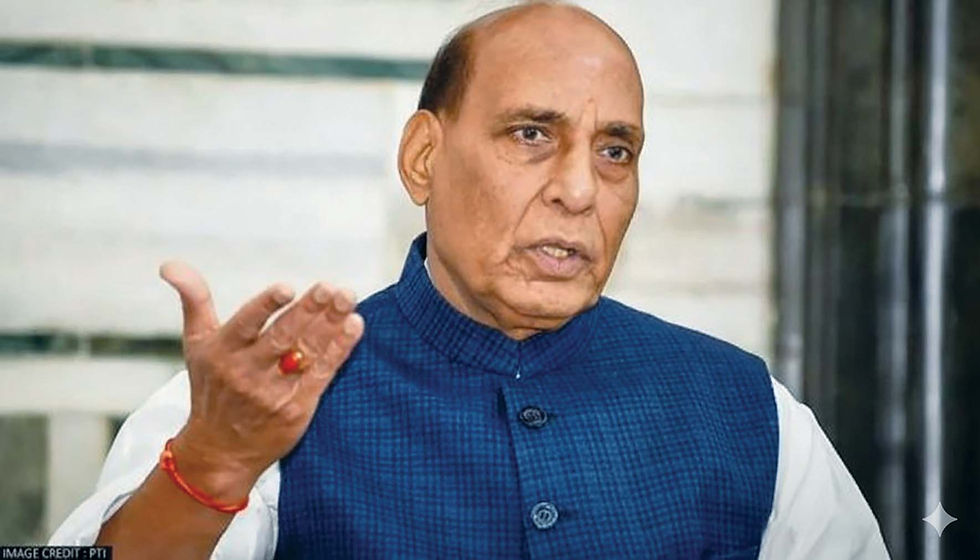Tariffs, Terrorism and Treachery: How friends, foes and opportunists test India’s resolve
- Kiran D. Tare

- Aug 14
- 5 min read
As our country turns 79, it faces an abrasive America and a perfidious Pakistan, and must balance external provocation with domestic political theatre.

The week before India’s 79th Independence Day has brought a reminder that geopolitics and domestic politics are both unkind to the complacent. The world’s third-largest economy is navigating a perfect storm: Washington is flirting with old habits by coquetting with Pakistan; Donald Trump has slapped a 50 per cent tariff on Indian goods; China is back in the diplomatic frame; and, at home, the opposition has discovered that manufacturing doubt is easier than manufacturing consent.
This cocktail of pressures comes just as India’s growth story looks more promising than it has in decades. That is precisely why the challenges loom large as the country has more to lose, and more to protect, than ever before.
Donald Trump recently slapped a punitive 50 per cent tariff on Indian goods. For India, now the world’s third-largest economy, the move is both an irritant and a test of strategic agility. New Delhi must navigate an America that has shifted from transactional under Trump 1.0 to transactional-with-attitude under Trump 2.0. Legally, this sits atop a 10 percent baseline tariff established by executive order and a fresh 25-point surcharge specifically on India this month, bringing the combined hit to around 50 per cent.
India must therefore prepare for a phase in which tariffs are used as leverage and terrorism is downplayed by the US in the name of ‘stability.’ The Modi government’s response will set the tone for India’s next decade: whether it allows itself to be boxed in by great-power games, or whether it leverages its market size, strategic geography and diplomatic clout to stay in control of its own trajectory.
The tariffs will likely sting, but they are not fatal. India has been here before in the early 1990s, when its economy was still fragile, Washington’s sanctions after its nuclear tests were far more crippling. Now, with a $4 trillion GDP, record forex reserves, and a booming services sector, India has more leverage.
Some in Delhi spy an opportunity. If American tariffs push China further out of the US market, nimble Indian manufacturers could grab market share if they can improve scale, quality and delivery times. Of course, those “ifs” remain large. Without structural reforms in logistics, energy pricing, and land acquisition, India’s manufacturers will struggle to capitalise on any vacuum left by China.
Even as tariff tensions brew with America, Delhi is making a pragmatic gesture towards Beijing. Narendra Modi is preparing to travel to China for the first time in seven years to attend the Shanghai Cooperation Organisation summit in Tianjin at the end of this month. Alongside the diplomatic choreography will come a practical announcement: the resumption of direct passenger flights between the two countries, suspended since the pandemic and the deadly Galwan Valley clash in 2020.
Across the Atlantic, the UK is a rare bright spot. London and New Delhi signed their free-trade agreement last month. But the hard work begins now with ratification, phased implementation and ensuring that the rules-of-origin do not blunt the promised gains.
Energy security is trickier still. U.S. and European sanctions have tightened around Russia’s oil logistics, with more tankers and traders blacklisted and some cargoes to India diverted or delayed. Indian refiners are being nudged toward stricter compliance thresholds, complicating procurement and narrowing discounts that once padded margins
On the diplomatic front, the most visible irritant lies in America’s renewed indulgence of Pakistan. That Pakistan has once again turned to exporting terror was grimly underscored in the April 22 Pahalgam massacre of our civilians. Trump’s rhetorical soft spot for Pakistan, cultivated in the name of countering China in Afghanistan’s shadow, risks emboldening a state apparatus that treats terrorism as statecraft. Washington’s coyness towards Munir, reinforces the perception that Pakistan’s dangerous games will not incur serious penalties from the West.
The US State Department’s recent designation of the Balochistan Liberation Army (BLA) and its Majeed Brigade wing as foreign terrorist organisations followed as soon as Pakistan’s army chief, Field Marshal Asim Munir issued India with a threat of nuclear catastrophe on American soil.
Worse, the terrorist-designation exercise has the air of the old Washington playbook of ‘balancing’ India and Pakistan. That script was supposedly abandoned two decades ago, when America belatedly recognised that Pakistan’s military deep-state thrives on strategic rent-seeking and chronic instability.
To many in India, Trump’s repeated coquetting with Munir risks making India-US strategic ties politically toxic.
If India’s external environment is messy, its internal political stage is equally parlous. Congress leader Rahul Gandhi’s ‘Vote Chori’ campaign has accused the Election Commission of padding voter rolls with fake entries in Maharashtra and elsewhere. The so-called evidence has been not merely flimsy but downright false in several instances.
By attempting to paint the world’s largest democracy as a ‘rigged’ system, the Congress gives rhetorical ammunition to those who seek to undermine India’s credibility abroad.
The hypocrisy is brazen. When voter-roll increases were larger in 2004 and 2009, the Congress celebrated the results. And yet, a year after the 2024 Lok Sabha election, the Congress now mounts street protests, knowing the spectacle will dominate headlines and embolden its ecosystem.
In fact, India’s external challenges sometimes pale beside the insidious campaign against our government at home. Rahul Gandhi and the Congress Party, unable to best Narendra Modi at the ballot box, have settled for undermining India’s credibility abroad. Such rhetoric has not merely been confined to political slanging matches. A pliant intellectual and media ecosystem, along with a constellation of taxpayer-funded academics, have amplified every anti-India every barb into an international talking point. Stories have cherry-picked economic data, casting India’s strategic moves as blunders while treating its adversaries’ propaganda with the solemnity of fact.
Gandhi and his sycophants within the Congress appear determined to question India’s strength at every international inflection point, be it parroting Trump’s India is a “dead economy” jibe to creating a narrative akin to Pakistan’s during Operation Sindoor.
Gandhi’s remarks, amplified on foreign platforms, hand talking points to those eager to paint India as weak, fractious and unreliable. This is hardly the first time Congress leaders have sung from a foreign hymn sheet. Ahead of Independence Day, we regrettably have our country’s primary opposition party playing into the old colonial narrative that India was incapable of self-rule. The same habit of undermining the national position persists, only the masters have changed.
The task before Prime Minister Modi and the Indian government, therefore, is unenviable. But if history is any guide, then India will adapt. It has weathered the Nixon shock, the Clinton sanctions, the post-9/11 embrace of Pakistan and the 2008 financial crisis. Tariffs and terrorism, even in tandem, are unlikely to halt the rise of an economy whose fundamentals like demography, domestic demand and digitalisation remain robust. But India’s tenacity will have to be matched with tactical flexibility if it must outmatch its enemies from within and without.





Comments